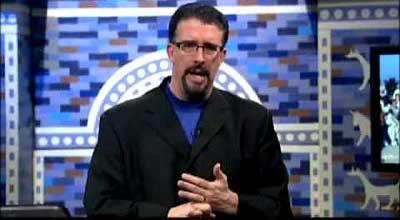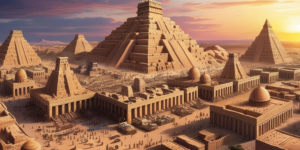Perry Stone Makes a Case for the Rapture
Note: This story originally appeared on charismamag.com in 2011.
Among Christians worldwide, there is controversy concerning teaching about the rapture, an end-times event described by the apostle Paul in several Scripture passages (see 1 Thess. 4:16-17; Eph. 1:9-10; 1 Cor. 15:51-55, for example). The English word “rapture” is derived from a Latin translation by St. Jerome of the phrase “caught up” in the New Testament (see 1 Thess. 4:17, NKJV).
More accurate biblical phrases are “the gathering together” (see Eph. 1:10; 2 Thess. 2:1), the “catching away” (1 Thess. 4:17), and the “general assembly” (Heb.12:23). The term “rapture” refers to Christ’s return for the living saints and the resurrection of the dead in Christ, a predicted event whose timing is not revealed in the New Testament.
A type of the rapture appears in Exodus 19. Moses was on Mount Sinai receiving the Word of God. A “cloud” descended, and the “sound of the trumpet was very loud” as the “Lord descended” on the mount (Ex. 19:16-18). The “Lord came down” and “Moses went up” (v. 20).
This Old Testament event foreshadows a future happening described by Paul. He wrote that the “Lord Himself will descend from heaven … with the trumpet of God. … Then we who are alive and remain shall be caught up together … in the clouds” (1 Thess. 4:16-17).
The trumpet is identified by Jews as the Tekiah Ha Godolah, which is the longest and loudest last trumpet blast played during the Feast of Trumpets, known to Jews as Rosh Hashanah—the civil New Year on the Hebrew calendar. The day and hour of this fifth Jewish feast was not known (see Matt. 24:36) but was recognized when two witnesses identified the silver sliver of the moon.
Critics claim that the rapture is a contemporary doctrine, started in the 1830s when a woman gave a prophetic word. Yet the concept of a pre-tribulation coming of Christ was taught by Dr. John Gill in 1748 and by Peter Jerihu in 1687. It was alluded to by Ephraim the Syrian in his writings in A.D. 373 and by the Shepherd of Hermes about 10 years after the Apocalypse was written about by John.
Though some suggest the rapture is simply an escape teaching, they forget the principle of separation found throughout the Bible. Noah escaped death during the flood (see Heb. 11:7), Lot escaped the destruction of Sodom (see Gen. 19:29), the Hebrews escaped the destroying angel (see Ex. 12:23), Rahab was spared when Jericho’s walls fell (see Heb.11:31), and in the coming tribulation a Jewish remnant will escape the Antichrist (see Dan. 11:41; Rev. 7:3).
The patterns of the fall feasts also reveal a pattern for the rapture. Christ was crucified near Passover, in the tomb during Unleavened Bread and seen alive during First Fruits. The church was born at Pentecost (see Acts 2:1-4), and the three fall feasts all have a future fulfillment. The rapture is a pattern of the feast of Trumpets, the Tribulation is parallel to events on the Day of Atonement (when the nation of Israel was judged) and Tabernacles represents the future kingdom of the Messiah ruling on earth.
Even the ancient Jewish wedding is a picture of the marriage of the Messiah. When the groom came to receive his bride, the wedding celebration continued for seven days. Some suggest this is why the church will be in heaven for the entire seven years of the tribulation.
Whatever a person believes, we are to remain faithful till the end. We should plan as though we will be here a long time but live as though each day could be our last day. In this manner we are always prepared to meet the Lord.
Perry Stone is the director of Voice of Evangelism (voe.org) in Cleveland, Tenn. He is also the host of Manna-Fest, a weekly television program, and the author of The Meal That Heals and Breaking the Jewish Code (both Charisma House).






































